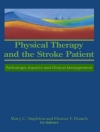Polymers have generated considerable interest in a large number of technologically important fields such as human healthcare systems. Polymers represent a very important domain of materials and have become an integral part of day to day human life. Polymers exist in nature; they have been and continue to be an integral part of the universe. This book is intended for scientists and researchers to use in their research or in their professional practice in polymer chemistry and its biomedical applications. Multiple biological, synthetic and hybrid polymers are used for multiple medical applications. A wide range of different polymers are available, and they have the advantage to be tunable in physical, chemical and biological properties and in a wide range to match the requirements of specific applications. This book gives a brief overview about the introduction and developments of polymers for different applications. The biomedical polymers comprise not only bulk materials, but also coatings and pharmaceutical nano-carriers for drugs. The surface modification of the inorganic nanoparticles with a physically or chemically end-tethered polymer chain has been employed to overcome the problems associated with the polymers. Chemically attached polymer chains not only stabilize the inorganic nanoparticles, but also lead to photosensitivity, bioactivity, biocompatibility and pharmacological properties in the composites. Polymer encapsulated silica nanocomposites (mesoporous) have potential applications in different fields, such as optics, bio-catalysis, microelectronics bone tissue engineering, coatings cosmetics, inks, agriculture, drug release systems, diagnoses, enzyme imaging, temperature-responsive materials, and thermosensitive vehicles for cellular imaging. Polymer grafted nanosized particles are known to have excellent properties such as good dispersion ability in solvents and polymer matrices. Polymer-based controlled drug delivery systems have some specific advantages, such as improved efficiency and reduced toxicity. The incorporation of a thermoresponsive polymer layer often enhances protein absorption and specific biomolecular tagging through hydrogen bonding. As a result, the nanocomposite gets cleared from the body at a faster rate (blood residence becomes low). This book is composed of fourteen edited chapters; it is intended for scientists and researchers to use in their research or in their professional practice in polymer chemistry and its biomedical applications.
Bhuvanesh Gupta & Deepak Pathania
Advances in Polymers for Biomedical Applications [PDF ebook]
Advances in Polymers for Biomedical Applications [PDF ebook]
Cumpărați această carte electronică și primiți încă 1 GRATUIT!
Format PDF ● Pagini 435 ● ISBN 9781536136135 ● Editor Bhuvanesh Gupta & Deepak Pathania ● Editura Nova Science Publishers, Inc. ● Publicat 2018 ● Descărcabil 3 ori ● Valută EUR ● ID 6890198 ● Protecție împotriva copiilor Adobe DRM
Necesită un cititor de ebook capabil de DRM












